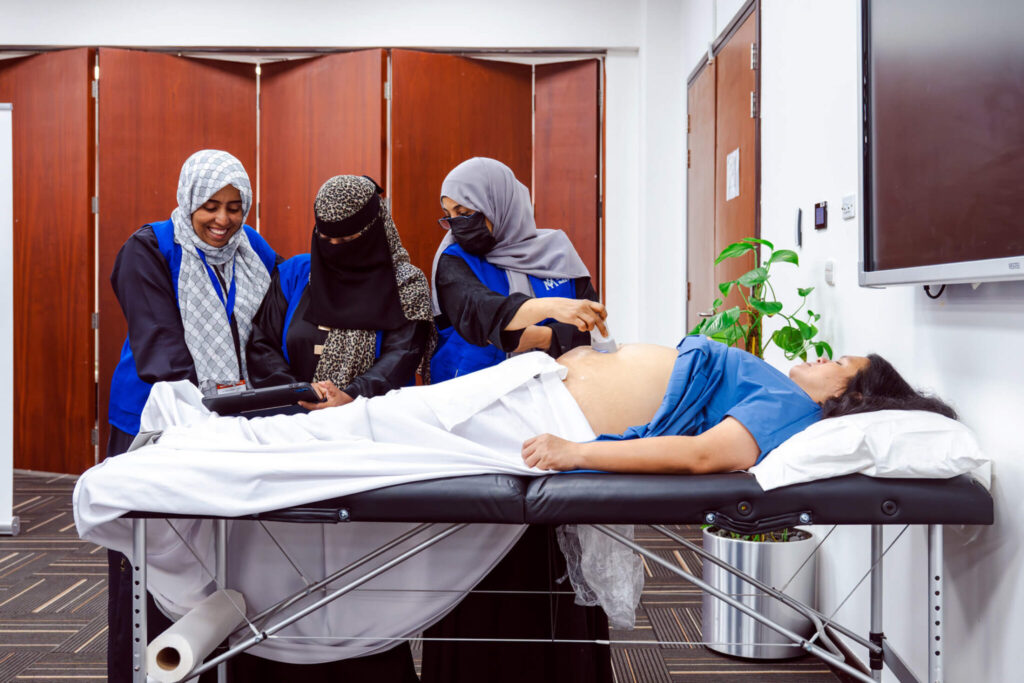In 2021, a 30-year-old Yemeni woman delivered a healthy baby at the Obstetric Emergency Center in Al Tawahi district in Aden—some 380 kilometres from the country’s capital, Sana’a. This was her second pregnancy, and her family rejoiced at the birth. But their happiness was short-lived. The woman had a retained placenta that required urgent intervention. The centre was able to provide only basic obstetric services and didn’t have an operating room or a way to provide a blood transfusion. It also didn’t have an ambulance to transfer the bleeding mother to the nearest referral hospital.
“We transferred her to the Comprehensive Emergency Obstetric Care Center in Crater district in her husband’s car,” says Dr. Iqbal Ali Shaif, General Director of Reproductive Health at Yemen’s Ministry of Public Health and Population (MoPHP). The mother was in critical condition due to continuous bleeding, which caused her blood supply to drop and made her unconscious. “Transferring a case of postpartum haemorrhage [PPH] in a private car instead of an ambulance is alarming because every second counts,” Dr. Shaif adds. “We managed to save the patient but with great difficulty.”
According to the World Health Organization, a woman in some part of the world dies every two minutes from pregnancy or childbirth. PPH is the leading cause of maternal deaths worldwide. Now, an initiative funded and supported by the King Salman Humanitarian Aid and Relief Center (KSrelief) and by the Gates Foundation, implemented in coordination with International Medical Corps, aims to test and implement a package of new, evidence-based approaches combining innovative practices, skills and technology to advance maternal and newborn health in Yemen, a country that has long struggled with high maternal and newborn mortality.
Merging Training and Technology
The initiative launched with a three‑day in‑person intensive training programme hosted at Dubai Humanitarian City from April 28 to 30. The capacity-building programme, which provided frontline healthcare workers with the necessary skills and knowledge to effectively address such conditions as anaemia, pre-eclampsia and eclampsia, PPH, maternal and neonatal sepsis, and neonatal respiratory distress, included interactive lectures to engage participants in the learning process. Hands-on sessions enabled them to practice techniques in real-time, while group discussions facilitated knowledge-sharing and encouraged peer learning. The programme also provided an opportunity for our staff, frontline healthcare workers and MoPHP officials to discuss the use of these technologies in Yemen, identify potential challenges and brainstorm ideas to overcome them.
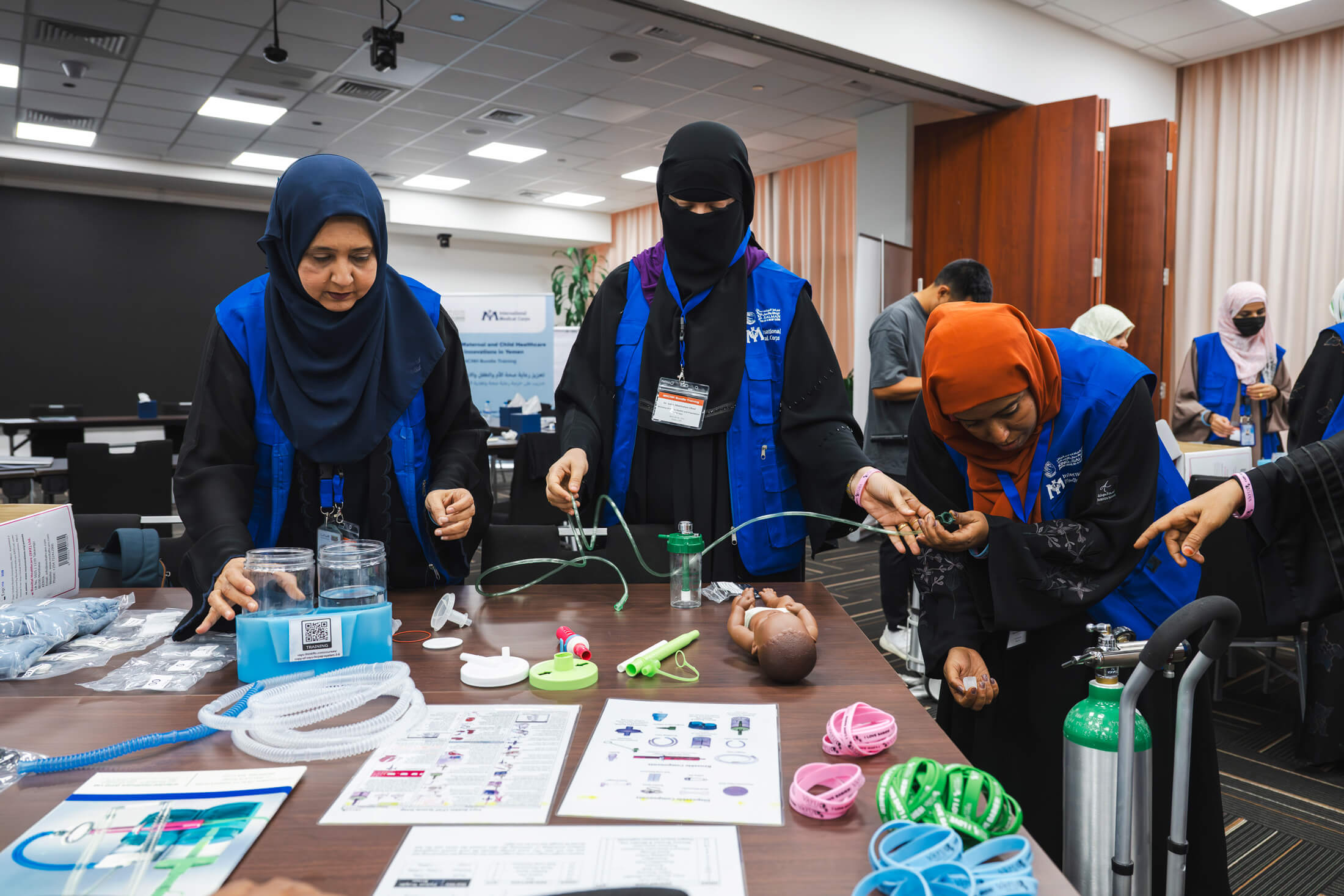
The participants included 10 Yemeni healthcare professionals—doctors and specialists in gynaecology, obstetrics and paediatrics. Dr. Shaif was one of the participants. “I saw an opportunity in this project to improve maternal and newborn healthcare in Yemen,” she explains, emphasising the partnership between International Medical Corps and the MoPHP to develop the project framework and select the health facilities to implement the innovative approaches.
Dr. Shaif says that the leading causes of maternal and infant mortality in Yemen are PPH and respiratory distress syndrome, respectively. Other factors that contribute significantly to mortality include a lack of antenatal care, high rates of unaided home deliveries, poor referral systems and limited access to healthcare due to poverty, conflict and geographical challenges.
Designed with these factors in mind, the programme paired evidence-based clinical practice with adaptable technologies and approaches suited to low-resource settings, including rapid anaemia diagnostics, calibrated blood collection drapes, a portable bubble continuous positive airway-pressure (CPAP) system and a handheld ultrasound device. The participants learned how to use these tools in their own health facilities and train others across Yemen’s healthcare network.
A number of innovative approaches will be rolled out in Yemen as part of the collaborative initiative.
Haemoglobin-testing device: A Hemocue is a portable, battery-operated device that enables clinicians to do a quick haemoglobin check without needing a laboratory. The device, which consists of an analyser and single-use microcuvettes, can deliver accurate results within 3 seconds. “It is easy to use, doesn’t require electricity to operate and can be used anywhere,” says Dr. Shaif.
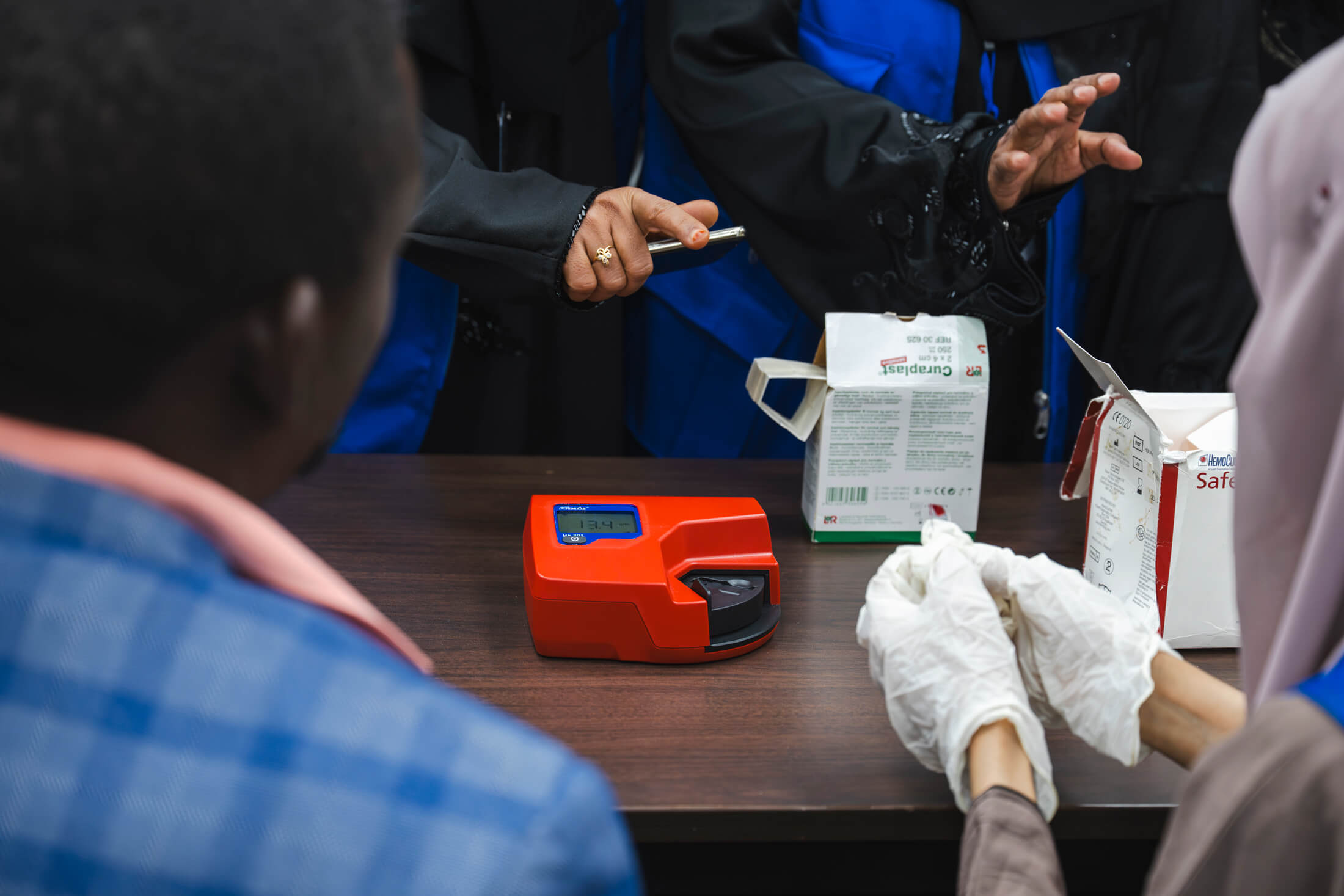
EMOTIVE PPH bundle: The World Health Organization’s EMOTIVE bundle of interventions helps clinicians detect and manage PPH as early as possible. One component includes a V-shaped, plastic blood-collection drape that measures blood loss during delivery, enabling more accurate detection of PPH and, therefore, quicker action. The calibrated drape has trigger lines at 300 millilitres and 500 millilitres of blood loss for the first hour after birth. Alongside the drape, the EMOTIVE bundle introduces the latest PPH-treatment protocol for healthcare workers, such as giving uterine massage and administering IV fluids. These interventions should be deployed simultaneously immediately upon the detection of PPH.
Bubble CPAP: This simple, non-invasive form of respiratory support enables clinicians to manage neonatal respiratory distress syndrome. The system includes a specialised oxygen blender, among other components, that delivers oxygen in safe, precise amounts to newborns, infants and children up to 5. It also maintains air pressure to keep the patient’s airways from collapsing, provides humidification to prevent nasal pathways from drying out and doesn’t require electricity or medically compressed air to function.


Handheld ultrasound device: Called VScan Air, this wireless, pocket-sized ultrasound device provides clear imaging using a lightweight and dual probe. Two transducers enable shallow scanning (for peripheral blood vessels and lymph nodes) and deep scanning (for heart and other organs of the abdomen and pelvis). It is waterproof and connects to both Android and iOS devices. “This device is so simple that midwives, general physicians and even medical assistants can use it,” Dr. Shaif says.
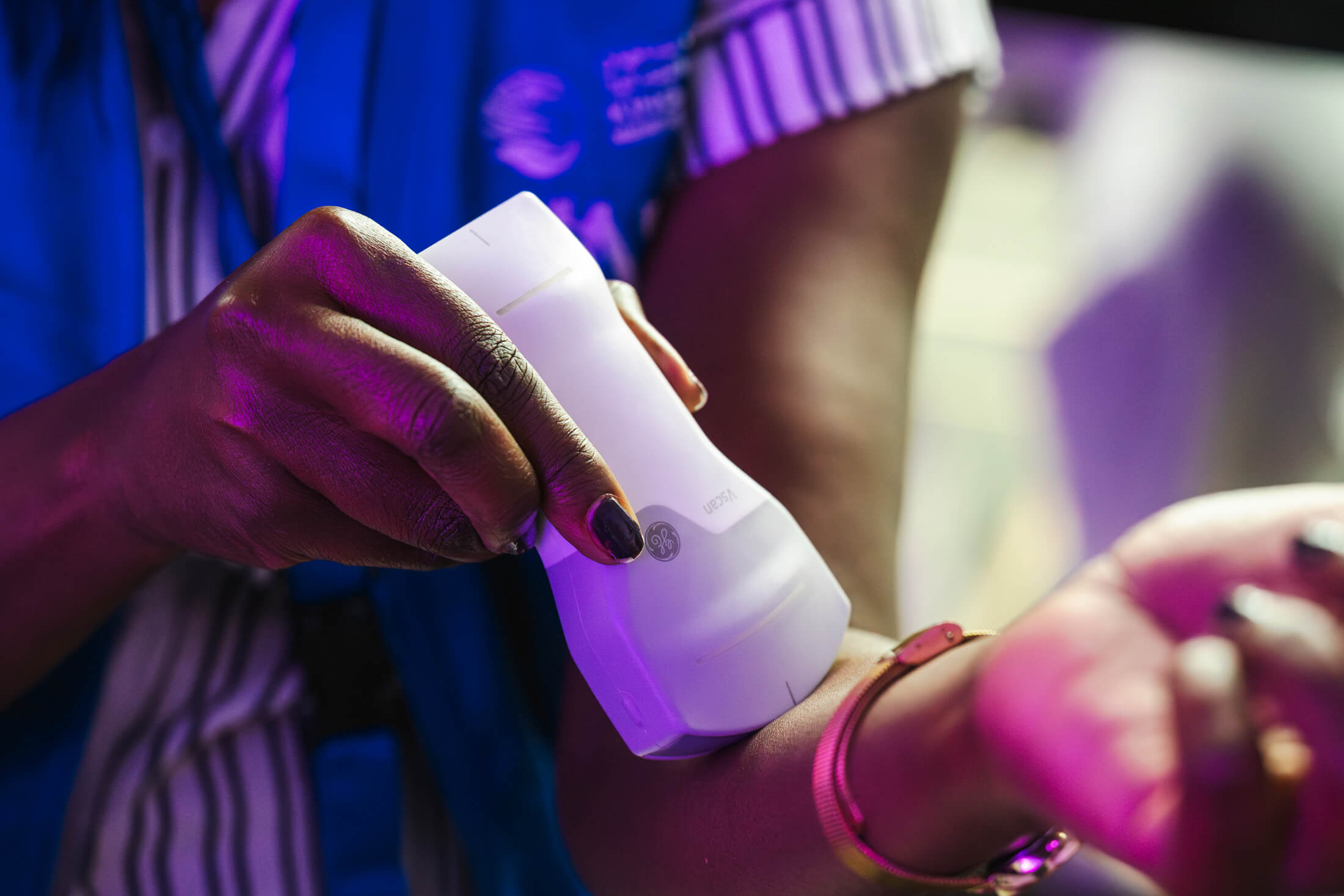
‘Intersectoral collaboration is equally important’
The training helped participants understand the early warning systems and management of sepsis—which, according to WHO, is the third leading cause of maternal and neonatal mortality, respectively. In addition, they learned about micronutrient supplementation for pregnant women and how to detect, classify and manage pre-eclampsia and eclampsia while practising emergency response steps. The training programme received positive feedback from participants, highlighting its engaging and collaborative format. They reported significant improvements in their knowledge and skills through the practical exercises and group discussions.
Dr. Shaif says that improving early diagnosis and timely referrals will reduce maternal and neonatal mortality. “The healthcare professionals who participated in the training program can now raise awareness about maternal health, not just among mothers but also among families,” she says. “It’s the entire family that must be educated and involved.”
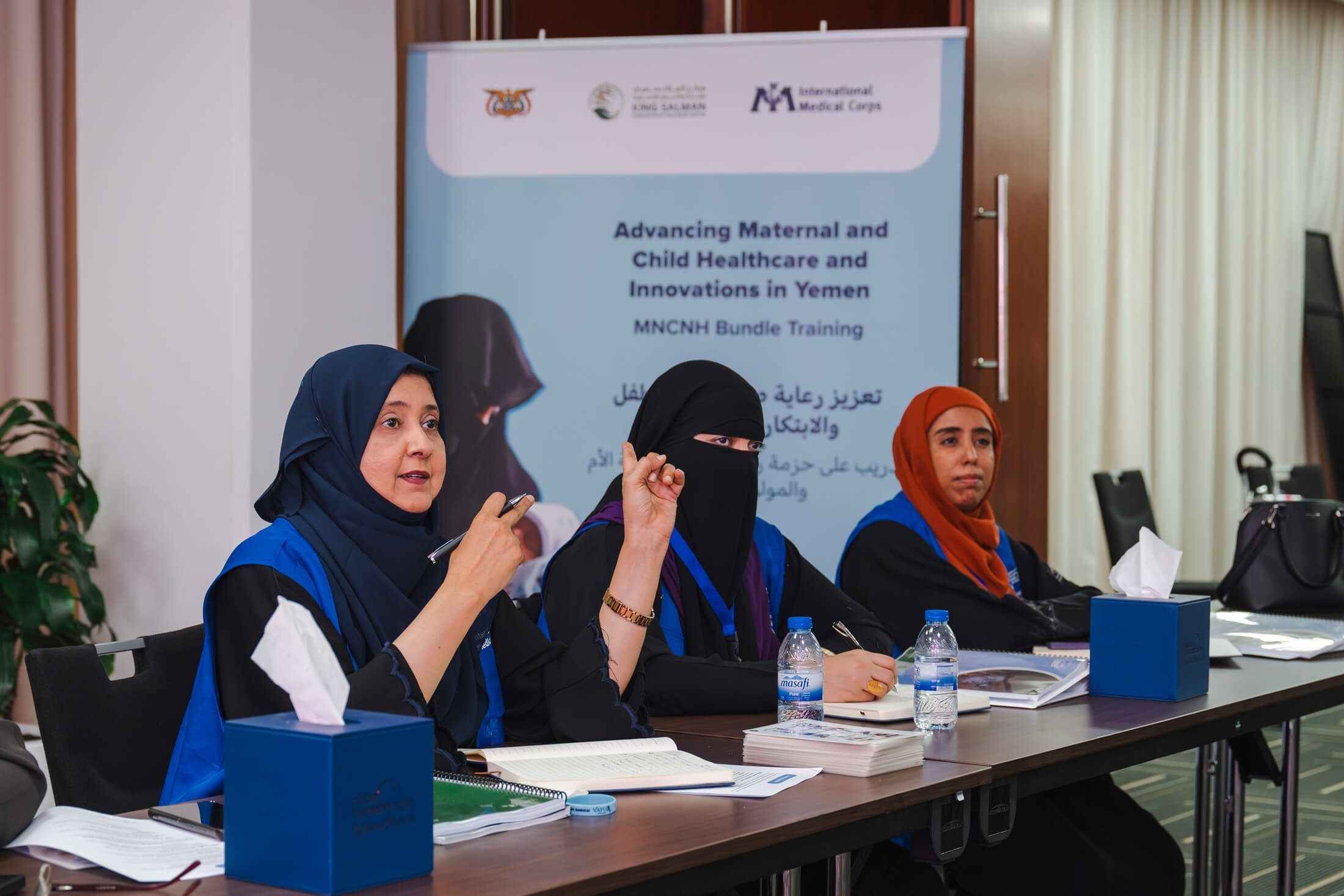
After the program concluded, International Medical Corps donated the medical equipment and supplies to the reproductive health sector of MoPHP, to facilitate on-the-job training for healthcare professionals in Yemen. Countries such as Kenya, Nigeria, South Africa and Tanzania have already tested and implemented the EMOTIVE bundle.
Dr. Shaif believes Yemen can serve as a model for the broader adoption of these lifesaving technologies. But challenges remain. “Even though we have the technology, we have insufficient trained staff in rural settings,” she explains. “Then there are funding and logistical constraints, such as the lack of spare parts for new medical devices.” To overcome these, she suggests increasing training efforts before the equipment arrives, working with donors to ensure the availability of spare parts and scaling up staff support and incentives. Finally, she says, “improving intersectoral collaboration is equally important, because nutrition, sanitation and other sectors also influence health.”
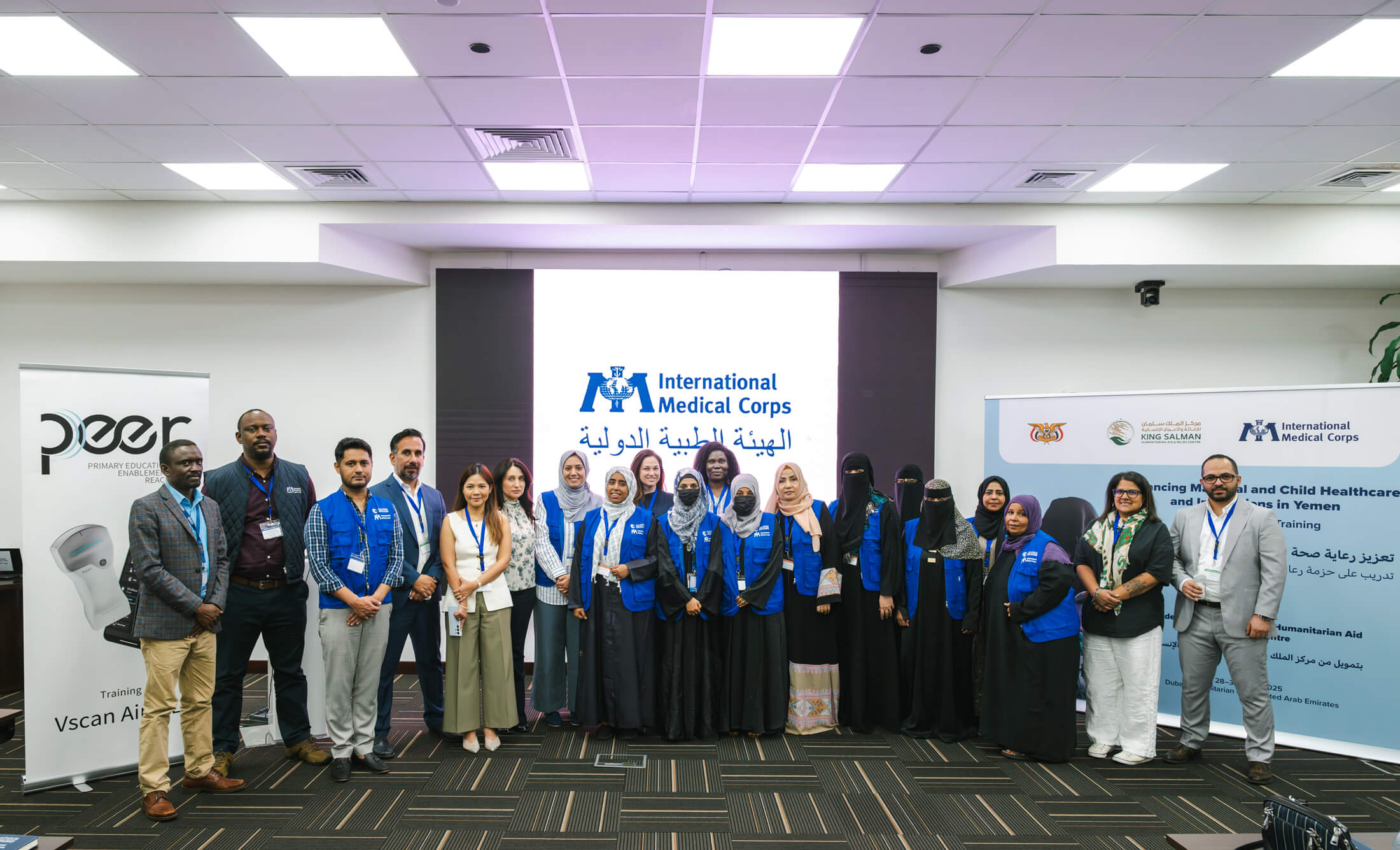
Learn more about our lifesaving work in Yemen.
